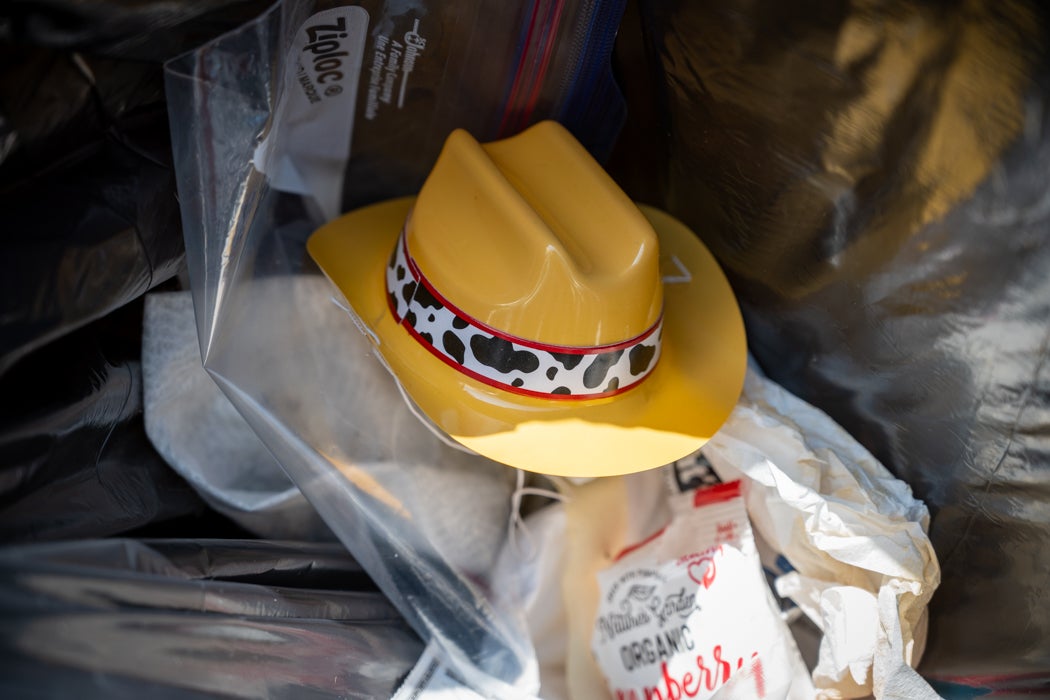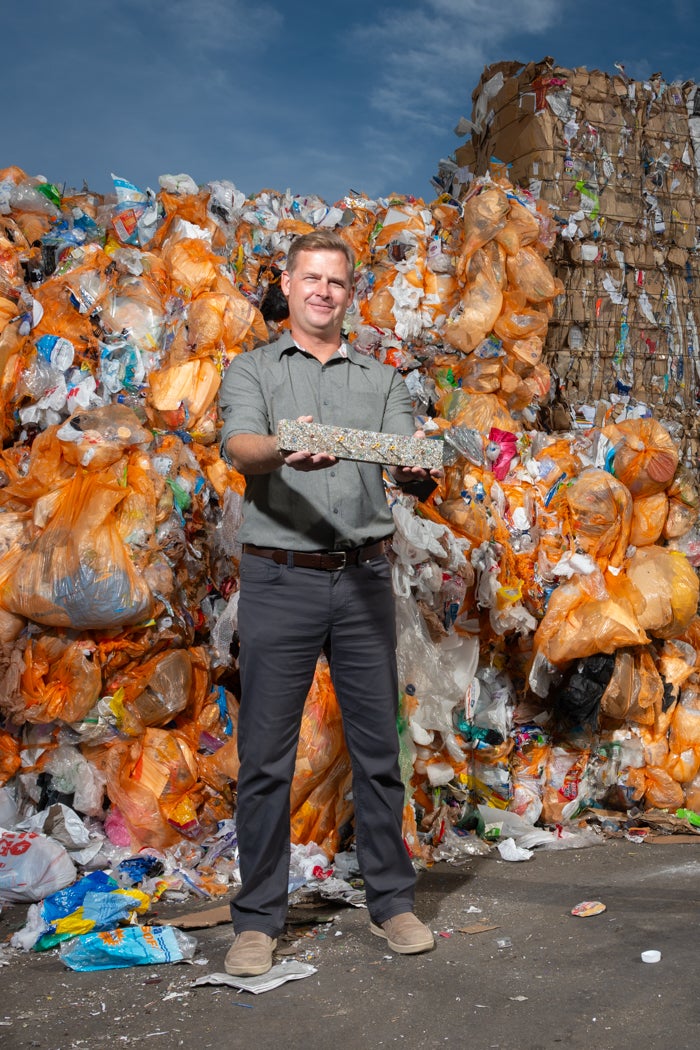Learning is all about asking questions, and no one asks questions better than children.
Boise State is home to more than 1,400 faculty members and researchers who are eager to answer these amazing questions.
Today, Scott Phillips, a professor of materials science and engineering, is answering a child’s questions; “What happens to the toys that get thrown away, and why can’t everything be recycled?”
At Boise State, Phillips studies ways to eliminate the need to separate plastics before processing. This professor and his team of graduate and undergraduate students are developing a method that not only combines multiple types of plastic but creates a new post-consumer material.

What happens to the toys that get thrown away?
“Most toys are plastic. When plastic toys are thrown away, they are taken to the landfill and buried. Over hundreds of years the plastic will slowly weaken and break into smaller plastics.
After hundreds or even thousands of years, the plastics eventually will decompose into small chemicals.
To give you an idea of that timelines, consider that you might live to be 90 years old. If you have children that live to be 90 years old, and your children have children that live to be 90 years old, and so on, then your plastic toys will still be sitting in a landfill for your children’s children’s children’s children… and on and on.
Wood toys, on the other hand, might last up to 15 years in a landfill,” said Phillips.
Why can’t everything be recycled?

Philips says, “Everything can be recycled, in theory, but we just don’t yet know how to recycle all things.
Think about a simple potato chip bag; these bags have layers of more than one type of plastic as well as a layer of aluminum on the inside. The bags can’t be used to make new things without first separating the plastics and aluminum from one another.
We don’t know how to easily separate the different plastics from one another, and we don’t know how to easily separate the aluminum from the plastic.
We also don’t yet know how to recycle things cheaply, meaning that it’s often less expensive to make a new item than to recycle an old item.
In a lab, we can separate the plastics and aluminum in the chip bag from one another, but the way that we’d do it in the lab won’t work easily or cheaply for recycling truck-loads of potato chip bags.”
Submit a question
Have a question for a Boise State researcher to answer?